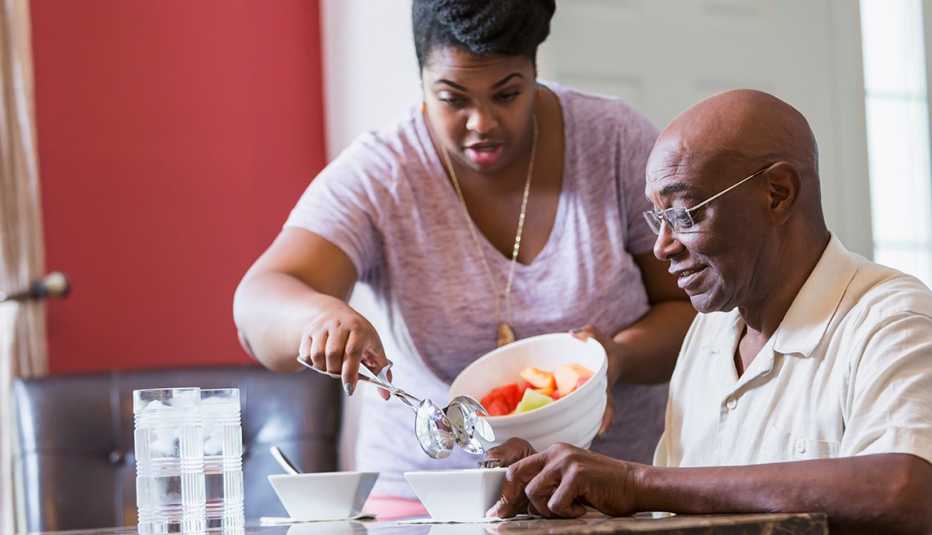Staying Fit


Two-thirds of U.S. adults, and more than three-quarters of those age 50-plus, want to stay in their home as they get older, according to AARP's November 2021 "Home and Community Preferences" survey.
Family caregiving is a key component to making that wish a reality. The 2020 Caregiving in the U.S. report from AARP and the National Alliance for Caregiving found that 43 percent of family caregivers are looking after people who live in their own home, and 40 percent share a residence with the care recipient.


AARP Membership— $12 for your first year when you sign up for Automatic Renewal
Get instant access to members-only products and hundreds of discounts, a free second membership, and a subscription to AARP the Magazine.
Helping a loved one age in place may mean anything from stopping by a parent's home to check in every few days to assisting a spouse or partner with tasks such as bathing and meal prep, as well as activities including medication management and administering injections. Whatever level of care you provide, these tips can help you help your loved one remain at home for as long, and as comfortably, as possible.
Develop a plan
Planning for both the short and long term is important. You need to stay on top of the daily stuff, the doctor appointments and prescription refills while thinking through the what-ifs of your relative's age and condition.
You can't anticipate every scenario, but being forward-thinking now will help you respond more quickly and effectively in an emergency. And don't go it alone. Reach out to form a larger team of family, friends and others who can help you.
- Determine tasks and find consensus. Ask team members what they're willing to do to contribute to the individual's care. Even if they live far away, they can handle jobs such as paying bills, ordering prescriptions and scheduling medical appointments. Work with them on a plan.
- Be honest with yourself. What are you prepared to do? If you are uncomfortable with hands-on caregiving tasks, such as helping a family member bathe, ask if another team member can step in, or discuss whether money is available to hire a professional.
- Summarize the plan in writing. A written record will ensure that everyone on your team, including your loved one, is on the same page, thus avoiding misunderstandings. Remember, of course, that the plan will likely evolve; update it as time passes.

































































More From AARP
Home Health Care Aides
What family caregivers need to know
Respite Care Can Be Invaluable for Family Caregivers
Time off from caregiving duties is a necessity, not luxury